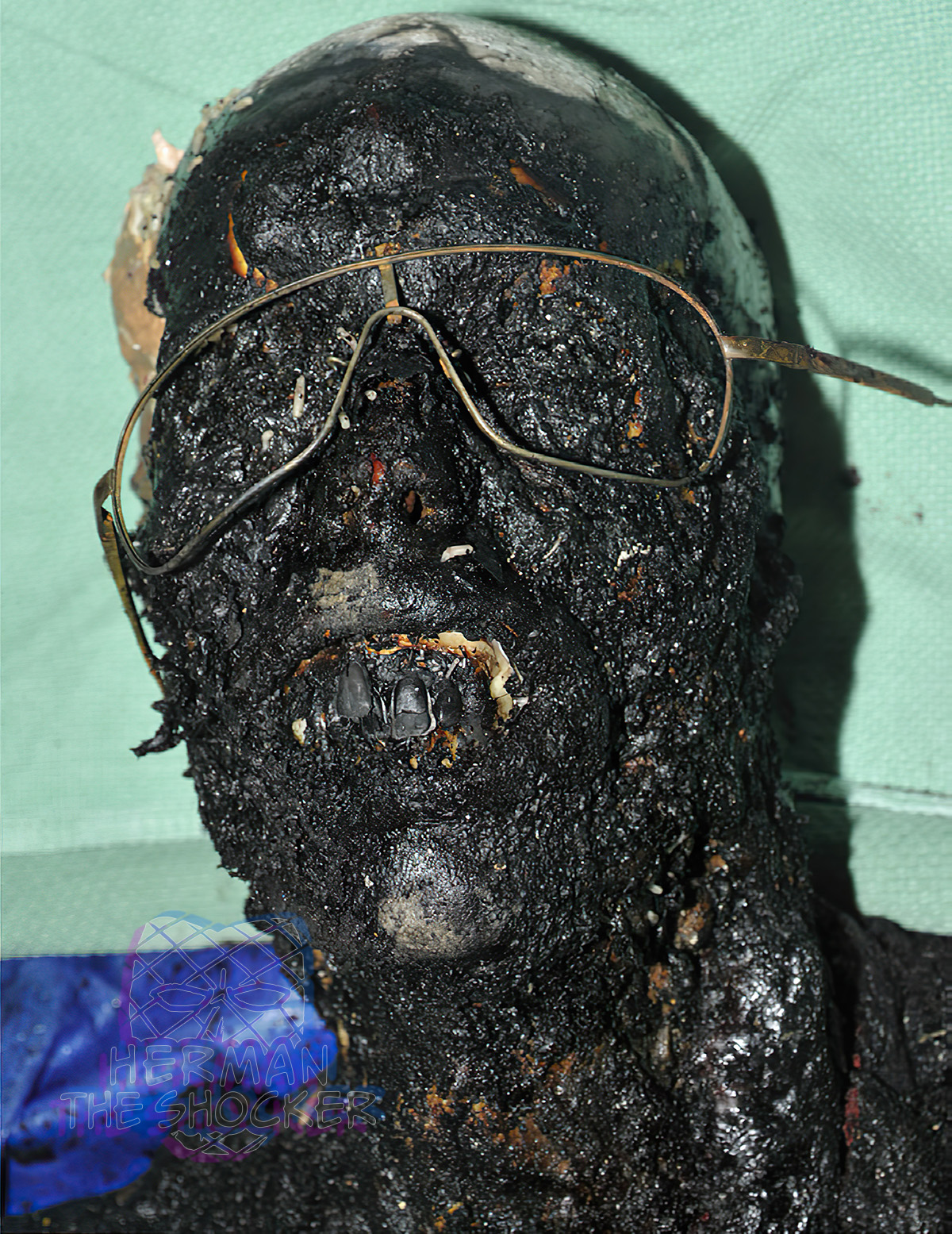This male individual was driving when an LPG cylinder(Liquefied petroleum gas), which was in the front passenger side of the vehicle, ignited causing a fire. The case is suspected to be a suicide. The individual was located in the driver’s seat. There was extensive fire damage to much of the body and extensive loss of soft tissues of the head. The teeth and mandible were exposed. The ribs were visible and there were defects in the intercostal muscles, with the internal organs visible through the defects. The right shoulder was dislocated and there were fractures of the distal right radius and ulna. The metacarpals of the left and right hand were exposed and brittle. Postmortem toxicological analysis detected hydrogen cyanide in the blood. Carbon monoxide and volatile compounds were not detected.
Postmortem CT highlighted a number of heat-related fractures of the cranium and mandible and upper limbs. There was a fragment of bone lost on the right parietal bone as a result of the fire. The typical flexion of the knees and arms was a result of the fire. Associated with this flexion were heat-related fractures of the distal radii and ulna (relatively thin bones), whereas the thicker distal tibiae and fibulae were not fractured. The presence of hydrogen cyanide in the blood indicated that the individual was alive at the start of the fire. Hydrogen cyanide is a gas produced by combustion of organic fuels and plastic products.
Latest posts














